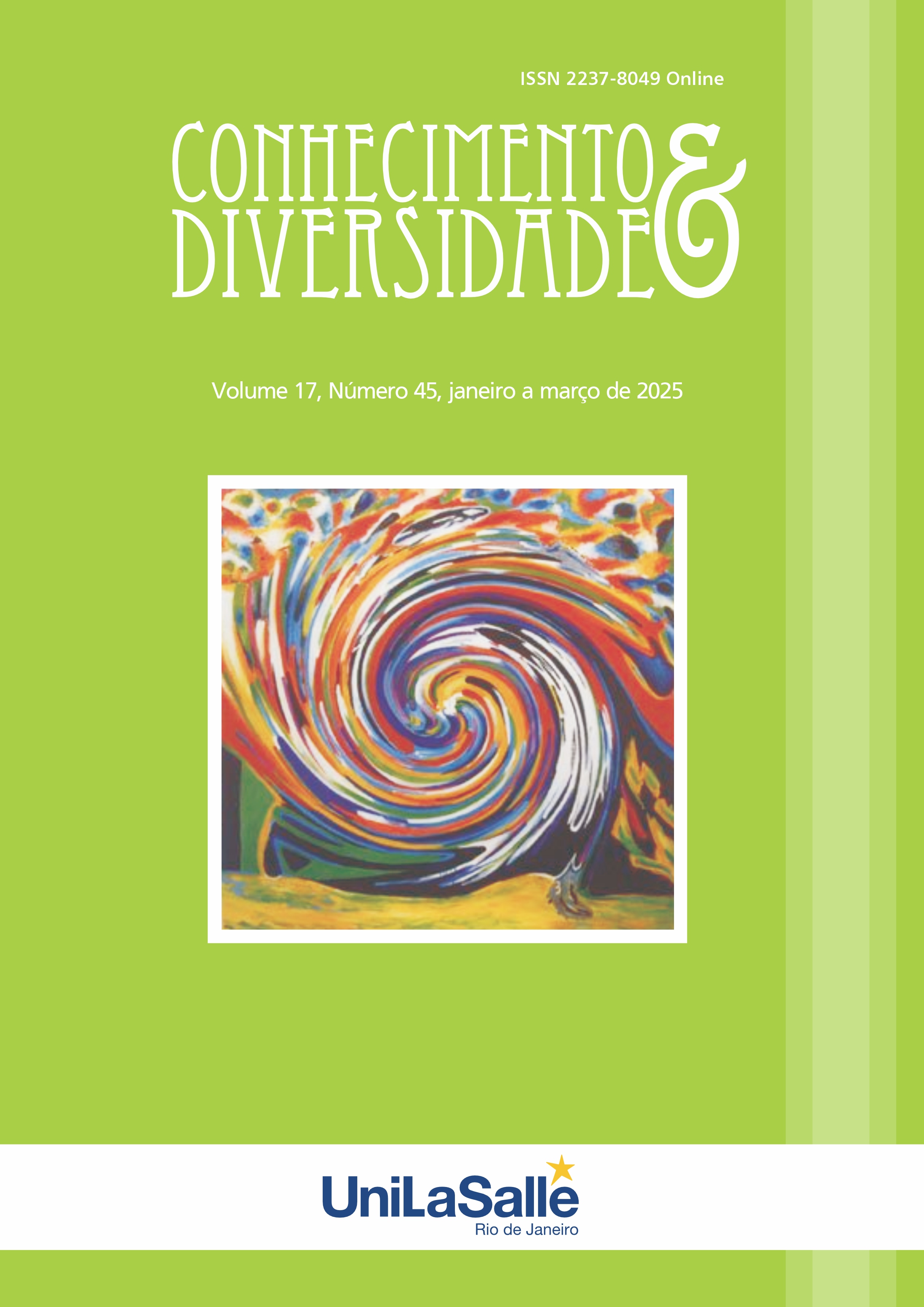HOW DOES INCOME INEQUALITY AFFECT ACADEMIC SUCCESS ACROSS COUNTRIES?
EVALUATION OF PISA RESULTS
DOI:
https://doi.org/10.18316/rcd.v17i45.12345Palabras clave:
Income Inequality, Academic Success, PISA Results, International ComparisonResumen
The aim of the study is to compare whether there is a significant difference between the PISA exam averages of countries with the highest income inequality and countries with the lowest income inequality and to determine whether there is a significant relationship between income inequality and PISA success. The study group was selected from among the countries with the highest and lowest income inequality according to the GINI index using the contrast sampling technique, which is a purposive sampling technique. T-test, correlation and simple linear regression analyses were conducted on income inequality and PISA scores. The average PISA scores of the 12 countries with the highest income inequality and the 12 countries with the lowest income inequality were compared with the average scores of the same countries regarding income inequality. There is a significant difference between the average PISA scores of the countries with the highest and lowest income inequality. There is a significant and inverse relationship between income inequality and PISA success. While income inequality increases, PISA success decreases, while PISA success increases as income inequality decreases. According to the simple linear regression model, income inequality predicts PISA success significantly as the only independent variable. Income inequality is a determinant of students' academic success.
Citas
Acham, H., Kikafunda, J.K., Malde, M.K., Oldewage-Theron, W.H., & Egal, A.A. (2012). Breakfast, midday meals and academic success in rural primary schools in Uganda: Implications for education and school health policy. Food & Nutrition Research 56(1). https://www.tandfonline.com/doi/full/10.3402/fnr.v56i0.11217#abstract
Açıkgöz, R., & Yusufoğlu, ÖŞ. (2012). The phenomenon of poverty and social repercussions in Turkey. Journal of the Human and Social Science Researches, 1(1), 76-117. https://scholar.google.com/scholar?hl=tr&as_sdt=0%2C5&q=%28A%C3%A7%C4%B1kg%C3%B6z+%26+Yusufo%C4%9Flu%2C+2012%29.+&btnG=
Aypay, A. (2022). Research design. Ankara: Nobel Publication.
Belot, M., & James, J. (2009). Healthy school meals and educational outcomes. Journal of Health Economics 30(3). https://www.sciencedirect.com/science/article/abs/pii/S0167629611000270
Boston, J. (2014). Child poverty in New Zealand: Why it matters and how it can be reduced. Educational Philosophy and Theory 46(9). https://www.tandfonline.com/doi/abs/10.1080/00131857.2014.931002
Brooks-Gunn, J., & Duncan, G. (1997). The Effects of poverty on children. Children and Poverty 7(2), 55-71. https://www.jstor.org/stable/1602387
Chiu, M.M. (2010). Effects of inequality, family and school on mathematics achievement: Country and student differences. Social Forces, 88(4), 1645–1676. https://doi.org/10.1353/sof.2010.0019
Condron, D.J. (2011). Egalitarianism and educational excellence: Compatible goals for affluent societies? Educational Researcher, 40(2), 47–55. https://doi.org/10.3102/0013189X11401021
Feinstein, L., Sabates, R., Anderson, T., Sorhaindo, A., & Hammond, C. (2006). What are the effects of education on health? https://citeseerx.ist.psu.edu/document?repid=rep1&type=pdf&doi=32e9079959269c5af50f7ad11a74712968cb01cb
GINI (2024). GINI index. https://data.worldbank.org/indicator/SI.POV.GINI?year=2023
Green, A. (2009) Education, inequality and the erosion of social cohesion. Forum 51(1), 5–8. https://eric.ed.gov/?id=EJ840434
Grossman, M. (2005) Education and non-market outcomes. Handbook of the Economics of Education 1, 577-633. https://www.sciencedirect.com/science/article/abs/pii/S1574069206010105
Gupta, R.P.-S., Wit, M.L., & McKeown, D. (2007). The Impact of poverty on the current and future health status of children. Paediatr Child Health 12(8), 667-673. https://academic.oup.com/pch/article/12/8/667/2647971
Haveman, R.H. & Wolfe, B.L. (1984) Schooling and economic well-being: the role of non-market effects. The Journal of Human Resources, 19(3), 377–407. https://www.jstor.org/stable/145879
Hill, T.D. & Jorgenson, A. (2018). Bring out Your Dead: A Study of ıncome ınequality and life expectancy in the united states, 2000–2010. Health & Place, 49, 1-6. https://www.sciencedirect.com/science/article/abs/pii/S1353829217306573
Hirsch, D. (2004) Strategies against poverty: A shared road map. New York: Joseph Rowntree Foundation. https://www.donaldhirsch.com/strategies.pdf
Horgan, G. (2009). That Child is Smart Because He’s Rich: The Impact of poverty on young children’s experiences of school. International Journal of Inclusive Education 13(4), 359-376. https://www.tandfonline.com/doi/abs/10.1080/13603110802707779
Jutz, R. (2015). The role of income inequality and social policies on income-related health inequalities in Europe. International Journal for Equity in Health,14(1). https://idp.springer.com/authorize?response_type=cookie&client_id=springerlink&redirect_uri=https%3A%2F%2Flink.springer.com%2Farticle%2F10.1186%2Fs12939-015-0247-y
Kızılgöl, Ö.A. (2012). The impact of gender inequality in education on poverty in Turkey. Journal of Management and Economics, 19(1), 179-191. https://dergipark.org.tr/en/pub/yonveek/issue/13696/165766
Marmot, M. (2004). Status syndrome. Significance, 1(4), 150–154. https://academic.oup.com/jrssig/article/1/4/150/7028894
Ministry, N.E. (2013). PISA 2012 preliminary national report. Ankara: General Directorate of Innovation and Education Technologies.
Ministry, N.E. (2015). What is PISA? http://pisa.meb.gov.tr/?page_id=18&lang=tr
OECD (2024). PISA results. https://www.oecd.org/en/about/programmes/pisa.html
Olson, M.E., Diekema, D., Elliott, B.A., & Renier, C.M. (2010). Impact of income and income inequality on infant health outcomes in the United States. Pediatrics, 126(6), 1165–1173. https://doi.org/10.1542/peds.2009-3378
Ratcliffe, C. (2015). Child poverty and adult success. https://www.urban.org/sites/default/files/publication/65766/2000369-Child-Poverty-and-Adult-Success.pdf
Redmond, G., & Kattuman, P. (2001) Employment polarisation and inequality in the UK and Hungary. Cambridge Journal of Economics, 25(4), 467–480. https://academic.oup.com/cje/article-abstract/25/4/467/1713085
Thorson, G.R., & Gearhart, S.M. (2018). The adverse effects of economic inequality on educational outcomes: An examination of PISA scores, 2000–2015. World Affairs, 181(3), 286–306. https://doi.org/10.1177/0043820018799425
Van der Berg, S. (2008). Poverty and education. Education policy series. https://citeseerx.ist.psu.edu/document?repid=rep1&type=pdf&doi=a003fb3a8192904f42a7bef31328eac3acca62ac
Wilkinson, R.G., & Pickett, K. (2010) The Spirit level: Why equality is better for everyone. Journal of Social Policy, 42(4), 840-842. doi:10.1017/S0047279413000366
Yaşar, R. (2016). The relationship between poverty, academic success and cultural capital. Kilis 7 Aralık University Social Sciences Journal, 6(2), 202-237. https://dergipark.org.tr/en/pub/kilissbd/issue/24637/260672
Descargas
Publicado
Número
Sección
Licencia
Derechos de autor 2025 İbrahim Çankaya

Esta obra está bajo una licencia internacional Creative Commons Atribución 4.0.
Tal como recomienda el Public Knowledge Project, RCD adopta para sus artículos una licencia CREATIVE COMMONS: Attribution CC BY 4.0
Esta licencia permite que otros distribuyan, remezclen, adapten y desarrollen su obra, incluso con fines comerciales, siempre que le atribuyan a usted el mérito de la creación original.
Esta es la licencia más adecuada que se ofrece.
Recomendado para la máxima difusión y utilización de los materiales bajo licencia.



